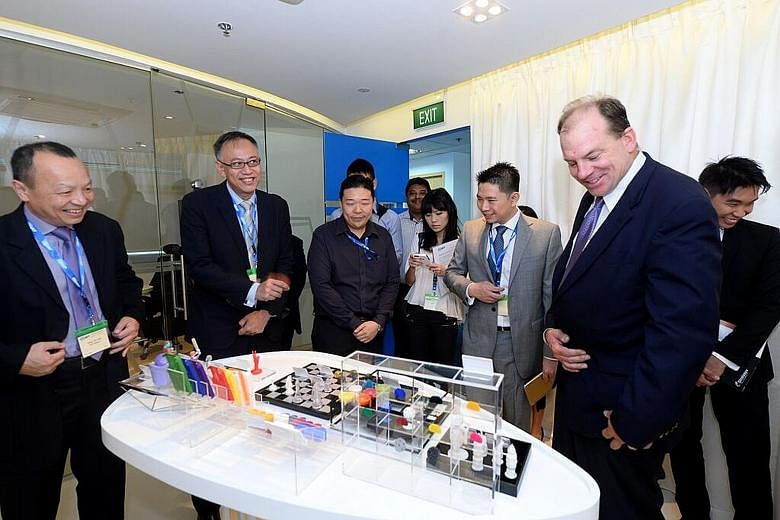The largest commercial 3D printing facility in South-east Asia was officially opened in Woodlands yesterday.
The plant, built by Ultra Clean Asia Pacific (UCT), has been operating since April. The plant serves the semiconductor, building and shipping sectors, as well as artists and jewellers. UCT is a unit of Nasdaq-listed manufacturing solutions player Ultra Clean Holdings.
Besides printing prototypes and product parts, the staff help companies devise ways to print their products using 3D printers.
The process involves creating objects with a machine that deposits thin layers of material - typically plastic or metal - layer by layer to form shapes.
UCT has 15 printers and 12 employees in its 3D printing arm, up from five when it opened in April.
It does not envision having to buy new printers until quarterly revenue from 3D printing reaches $4 million to $5 million, said Mr Lavi Lev, UCT's senior vice-president for Asia.
The Government identified 3D printing in 2013 as one of four areas for development under the $200 million Innovation Cluster Programme.
Last week, it announced a new partnership among three local universities to look at the latest research in 3D printing and study how to translate it into commercial use.
Not many firms here currently use the technology, Mr David Yeow, director of special projects at NTUitive, Nanyang Technological University's innovation and enterprise company, told The Straits Times last week.
But The Straits Times understands that UCT has had more more firms asking for 3D-printing services for prototyping last year compared with previous years.
UCT sees opportunities to expand into other sectors, including the aerospace and medical sectors.
"Right now, if you break your bones, (doctors) mend them with a titanium implant," Mr Lev said.
"They take an X-ray or CT scan of your broken bones and... someone can design an implant that is made just for your bone structure and it is 3D-printed just for you. This is almost the standard way to design titanium implants nowadays."
The 3D-printing business is still a "minuscule" part of UCT's operations, but will help the firm move up the value chain, said Mr Lev.
Previously, customers would ask UCT to execute a manufacturing approach they had already devised themselves. However, they now work with UCT to figure out if the product they desire can be built with 3D printers, said Mr Lev.
Mr Theo Kneepkens, vice-president of Asia operations at KLA-Tencor (Singapore), which makes machines that produce or inspect semiconductor parts, said 3D printing would help it fulfil more quickly jobs that require customised items.
In the past, customised machine parts would have to be built by cutting them out from a block of raw material - that would take several weeks. With 3D printing, one or a few parts can be printed in a day.
He said: "Where time-to-market is essential, you don't use machining any more; we straight away 3D-print some parts, it's much faster."
Mr Lim Kok Kiang, assistant managing director of the Economic Development Board (EDB), attended the opening.

